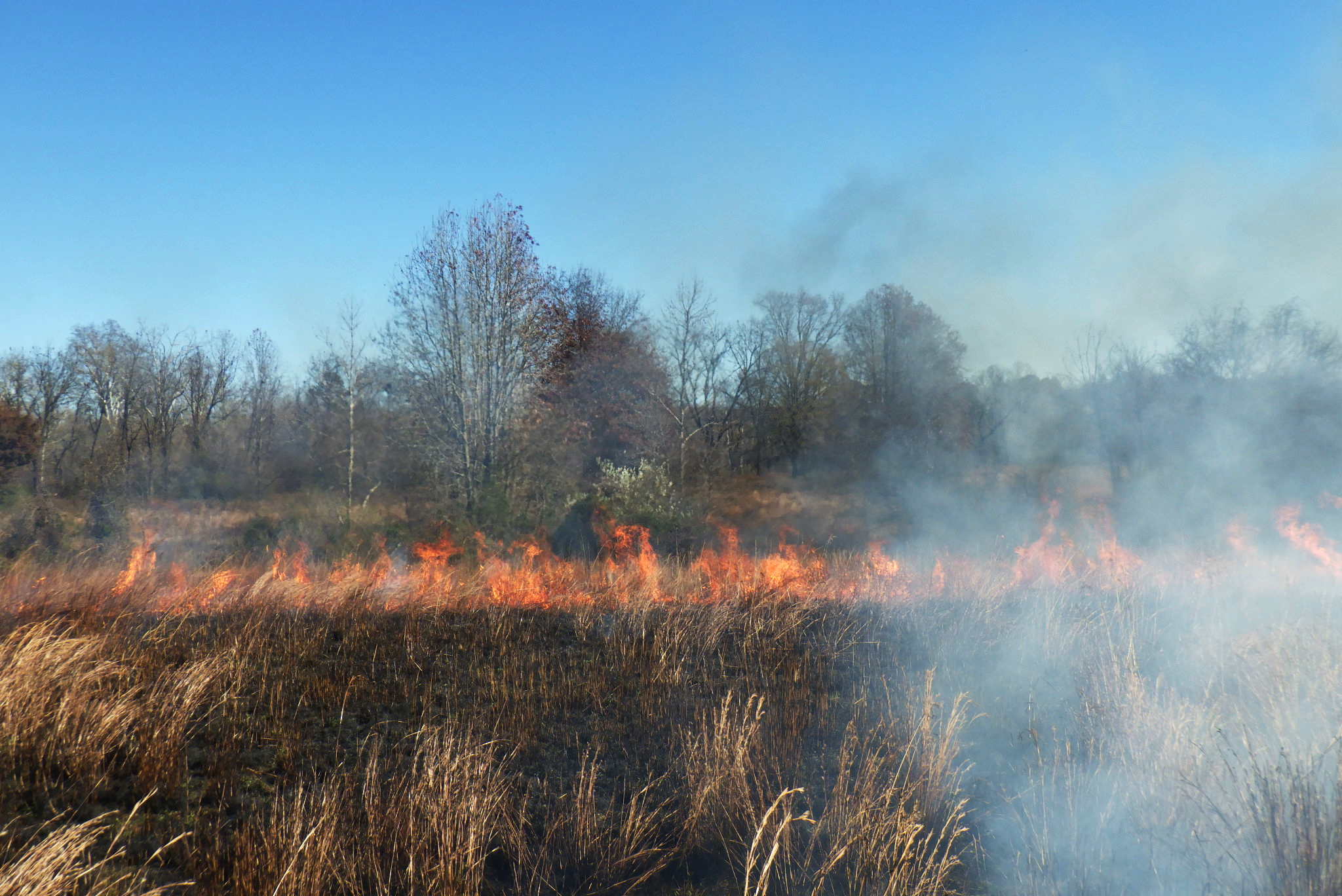
FIRE IN THE PIEDMONT
BY BEN KESSLER
Fire returns to the Piedmont. Earlier this November the Little Bluestem crew volunteered to help with a controlled burn of a remnant piece of Piedmont prairie coordinated by the Piedmont Discovery Center. PDC has been working for several years with local fire safety personnel to bring fire back to this landscape. Since the retreat of the northern glaciers, the bottomland of central Virginia’s Piedmont and river valleys has been carpeted in a lush array of prairie grasses and wildflowers. Maintained by grazing buffalo and human-assisted fire, grassland predominated and the forests were relegated to the rockier hills and mountain slopes. Only in recent historical times following the European occupation of the area, genocide of Indigenous fire-tenders, piecemeal land ownership law, and widespread alteration of soils by plowing and introduction of non-native earthworms, were the prairies shattered. Ecological succession in the post-colonial period usually favor forest over grassland- except in areas where seasonal mowing, grazing, and/or fire resemble parts of the land care regimen of earlier times.
Due to its rocky soils and tangled history of property ownership, PDC’s worksite is an exemplar of a rare place that appears never to have been plowed. This allowed more of the endemic prairie biodiversity to remain than elsewhere in the region- including the repeatedly plowed fields on the next hill over. The non-native Johnson-grass and Eurasian fescue-dominated succession on the plowed fields strikes a stark contrast to the many-hued mostly-native prairie. Where soil is disturbed and ancestral relationships between native soil organisms and native plants are disrupted, only generalists including ruderal non-native species can thrive- until such time as the delicately balanced web of dependent species in the soil, as complex in miniature as any rainforest or coral reef, recovers.
The reintroduction of fire to this landscape helps reinvigorate the native species by enriching the soil with carbonized stems, opens up bare ground for native grass seeds to germinate, and suppresses the overgrowth of brambles and woody shrubs. The project is inspiring, but tinged with a tender sense of the world that was lost, destroyed.
Projects like this are a distant echo of the regional ecological administration programs of the Monacan, Tutelo, and Saponi Nations, and the Woodland Nations before them. The care and attention we pay to the health of tens of acres now were once paid to the millions of acres that encompass the old Indigenous sovereignties. There’s something a little haunting in seeing a tiny fragmented remnant of the old world tended by a copy of a copy of a copy of an old way. The Monacan Nation endures at Bear Mountain, the ruins of Rassawek protected for another season. The ember of a long-burning fire has been kept through the long years of occupation. It is no less potent for its smallness; a tiny ember can spark a blaze that eats acres and invigorates the soil for next season’s seeds.













